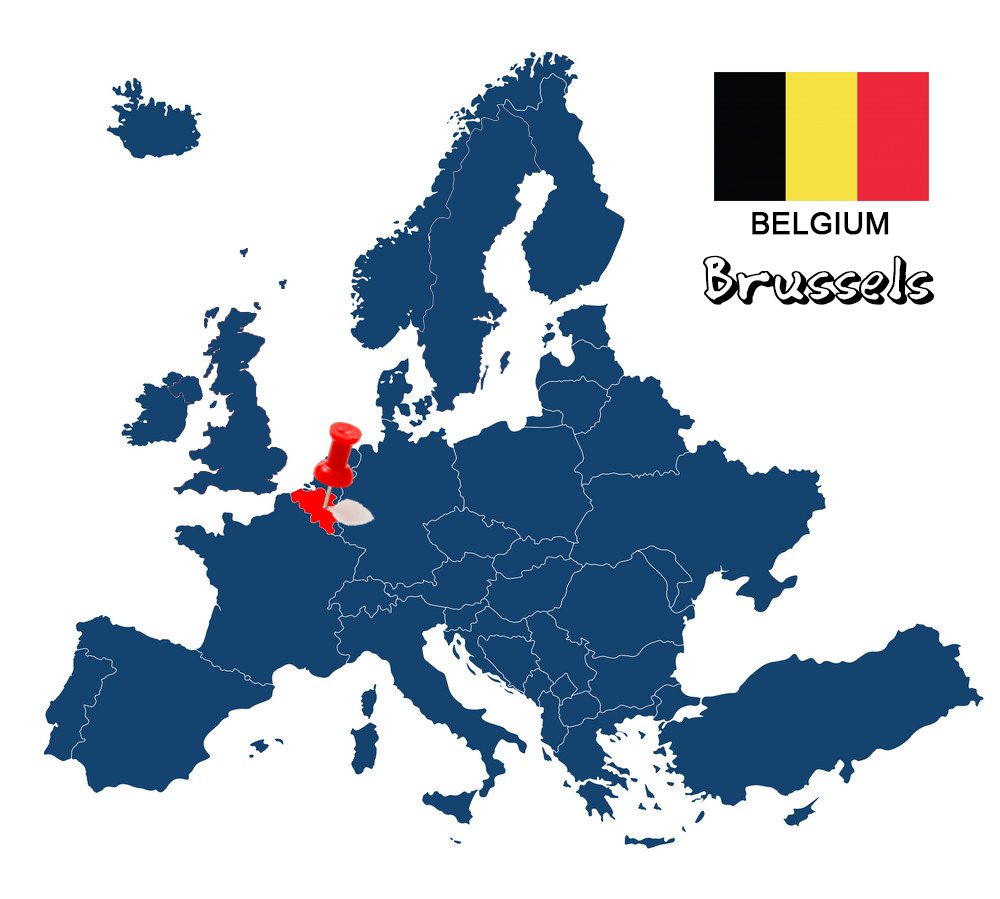
When I was listening to Brussels, the things that came to mind were the European Union, politicians, bureaucrats, the European Parliament and generally a "serious situation." But from the moment I set foot in the Belgian capital, I realized that it was a very lively and youthful metropolis, which had nothing to do with what I had in mind. Many and interesting sights, street art on every corner, plenty of beer and delicious chocolate are the features that make Brussels unique and adorable.
A few words about the city
Brussels is the capital of Belgium and the place where the heart of all Europe beats, since it is there that the most important decisions for its future are made. It is the largest, richest and most populous region of Belgium, with an urban population of around 1.2 million inhabitants, while the wider metropolitan area numbers over 2.1 million people. It seems to have taken its name from the Old Dutch word Broeksel, which means "house on the moor." Brussels combines centuries-old history with modern, is known for its cuisine and gastronomy, as well as its historical and architectural monuments, some of which are registered as UNESCO World Heritage sites. So I will try to introduce you to the city through my own eyes and share with you what I think a person who visits it for the first time should see.
Gran Place
The Grand Square (Gran Place) is the most central square and the most important attraction of Brussels. Considered one of the most beautiful in Europe, it dates back to the 15th century and is surrounded by well-known and architectural buildings, decorated with gold and many statues. In 1695 the troops of the French King Louis XIV invaded the country and destroyed all the structures of the square, but they were rebuilt just as they were by the local merchants resulting in this impressive baroque complex of architecture of today. Since 1998, Gran Place has been a UNESCO World Heritage Site.
The most imposing building that stands out is the City Hall (Hotel de Ville), which was built between 1402 and 1455. At the top of the 97-meter Gothic tower that touches the sky, stands a statue of the Archangel Michael, the patron of the city of Brussels.
Opposite the town hall stands the "House of bread" in Dutch (Broodhuis) or "House of the King" in French (Maison du Roi). This particular building at the beginning of the thirteenth century was wooden, and the bakers sold their bread, so its name in Dutch arose. In 1405 the wooden structure was replaced with a stone building, while gradually from the 15th century the bakers began to sell their merchandise door to door and the construction began to be used for administrative purposes by the Duke of Brabant. When the Duchy fell to the monarchy of the Habsburgs, the building from Maison du Duc (House of the Duke) became Maison du Roi (House of the King) and thus derived its name in French. Finally, during the reign of Emperor Charles V, the Royal House was rebuilt between 1515 to 1536 in Gothic style. Today it houses the Museum of the city (Musee de la Ville de Bruxelles), in which you will find, among other things, an impressive collection of 760 costumes of the statuette-mascot of the town Manneken Pis, to which I will refer below. Admission costs 8e.
Finally, if you are lucky and in the city during the Brussels Festival, which is held every two years in August, you will have the opportunity to admire something magical. The square is paved with a carpet decorated with 800,000 fresh flowers, which covers 300 square meters and creates an idyllic setting.
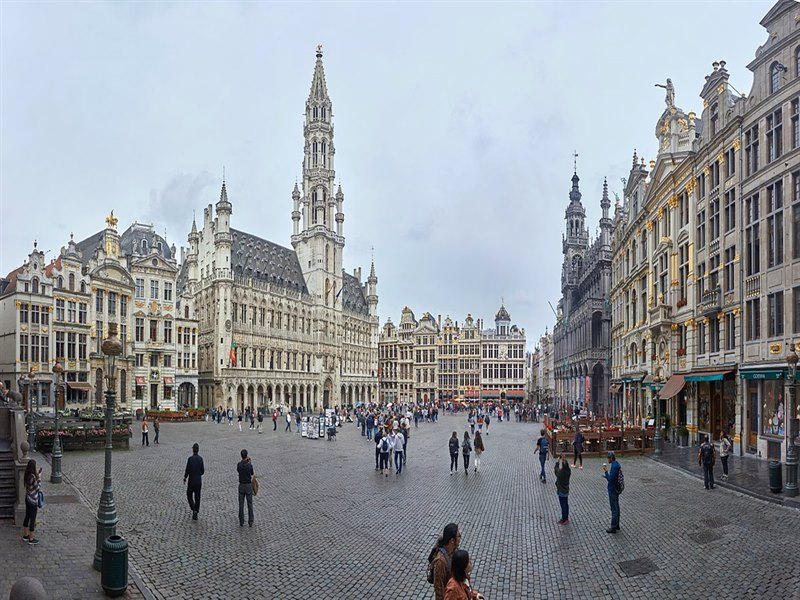
Manneken Pis
Many parks or pools around the world use a small peeing boy, but the original statue is located in Brussels, designed by Jerome Duquesnoy and installed in the town in 1619. The small peeing man (Manneken Pis), although only 60 cm is undoubtedly the trademark of the city. There are many myths about this statue, the one you is told to tourists, says that the fountain was built by a wealthy merchant who lost his son during a visit to the city. Eventually, he found him, with the help of a group of locals looking for him, peeing in a small garden, and the merchant donated the statue to thank the locals who helped him. Another story says that the young boy woke up from the fire and extinguished it with his pee, so he extinguished the fire from the king's castle. The most notable story, however, says that in 1142 the troops of Duke Godfrey III of Leuven, who was only 2 years old, fought with the troops of Lord Grimbergen. Troops place the little duke in a basket and hung him on a tree. From there, the kid peed on the opposing soldiers and led to victory in battle. Since 1987, the boy has his female version, Jeanneke Pis. To understand the frenzy for this statuette, think that every day they dress it with different clothes, which have been collected and exhibited in the city museum as I mentioned above.
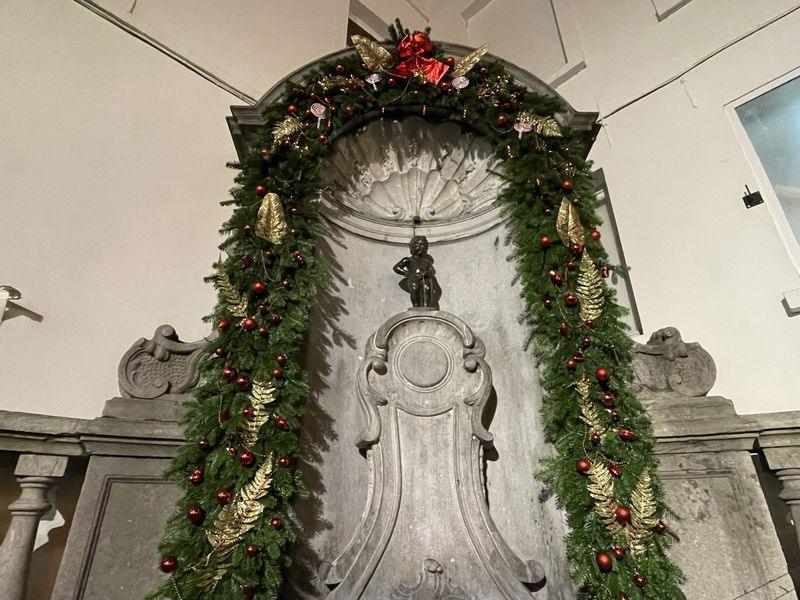
Atomium
The Atomium was built in 1958 for the 58th International Exhibition and was originally designed by Andre Waterkeyn to last only six months. "The Eiffel Tower in Brussels", as its nickname is, made so much sense that it was left to compete with the Manneken Pis as the city's symbol. It is a huge 103-meter structure, representing the cell of an iron crystal, magnified 165 billion times, with a vertical body diagonally, tubes along the 12 ends of the cube and from the eight vertices to the center. Inside there is a permanent exhibition, dedicated to the 1958 International Exhibition, while the periodic exhibitions hosted are related to architecture, design and society. With a lift you will be able to climb to the last iron ball, which provides the visitor with a stunning panoramic view of the city. Admission costs 15e.
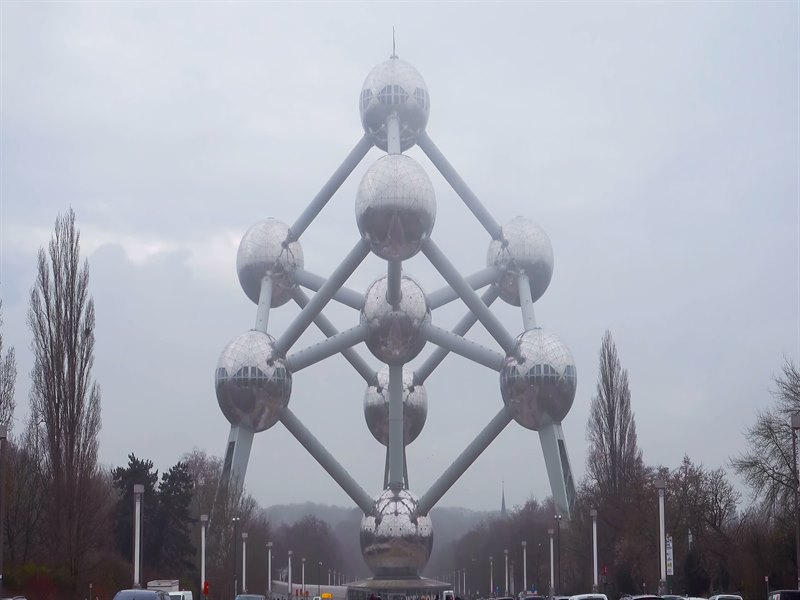
Mini Europe
Right next to the Atomium is a theme park, Mini Europe, which presents all the major buildings on the European continent at a scale of 1:25. In total in the park, there are 250 buildings from 80 cities and numerous living models such as trains, mills, the explosion of Vesuvius, Airbus, cable car, etc., while in a booklet that you will get at the entrance, you will find details about all the monuments. The models were chosen based on their architecture or their symbolism in shaping European culture. Of course, the Acropolis and Santorini have been selected from Greece, while from Cyprus, the ancient Greek theater of Kourion. In fact, the park is one of the most popular attractions in Brussels with 300,000 visitors a year. The entrance costs 11.80e.
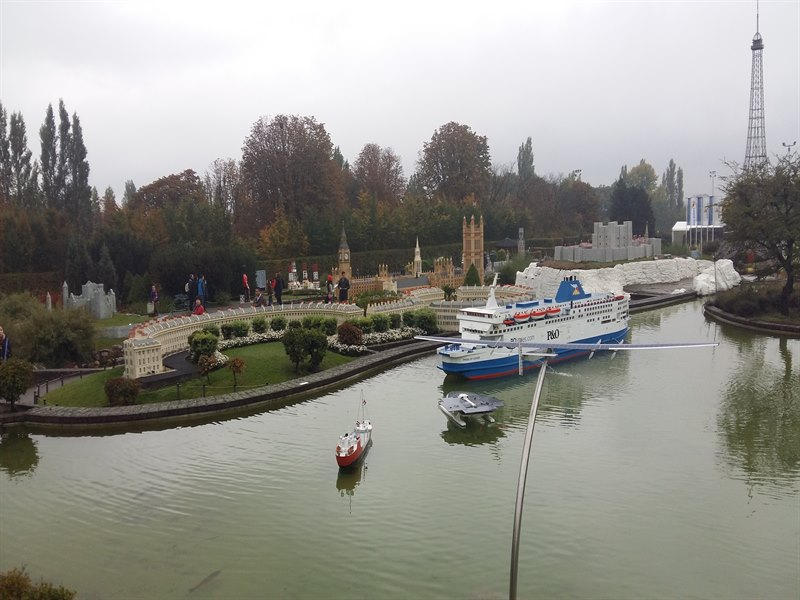
Palais Royal de Bruxelles
The Royal Palace of Brussels (Dutch: Koninklijk Paleis van Brussel, French: Palais Royal de Bruxelles) is the official palace of the King of Belgium and is located in the city center in front of Brussels Park and Paleizenplein. The history of the royal residence dates back to the second half of the 11th century and the first half of the 12th, when a building was built on the site that rather resembled a defensive Castle. Over the centuries, this castle became a palace which, with the last renovation of 1900 by King Leopold II of Belgium, took its current form. The palace is now used as the office of the King and his guard and as a reception area for foreign leaders, but is unused as a royal residence. The royal residence is the Royal Castle of Laken, built between 1782-1784. Guided tours are allowed from July to September, when you can browse its luxurious rooms, most importantly the throne room and the hall with mirrors.
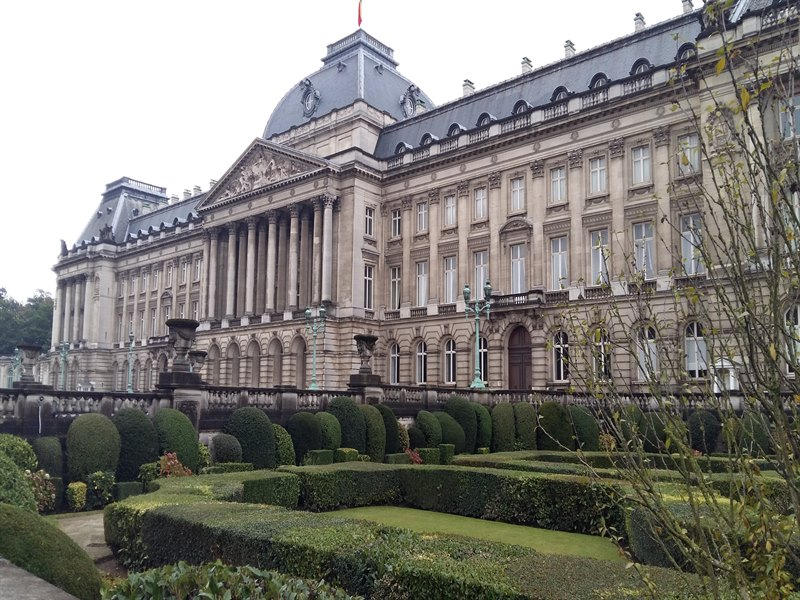
Parlamentarium
It is impossible to visit Brussels and not to see the buildings in which the European Parliament (Parlamentarium) is housed. In the famous region of Europe (European district), you will find the largest visitor centre of the European Parliament, which presents the path to European integration and the functions of Parliament. Attractions at the Parlamentarium include: a huge 3D installation with a map of Europe, a 360-degree digital view of Parliament, an interactive virtual trip across Europe to explore each member state and a video with messages from members of the European Parliament. The tour is available in 24 languages, and admission is free. Also, in the area you can see the building that houses the European Commission, Berlaymont district and the Statue of Europe.
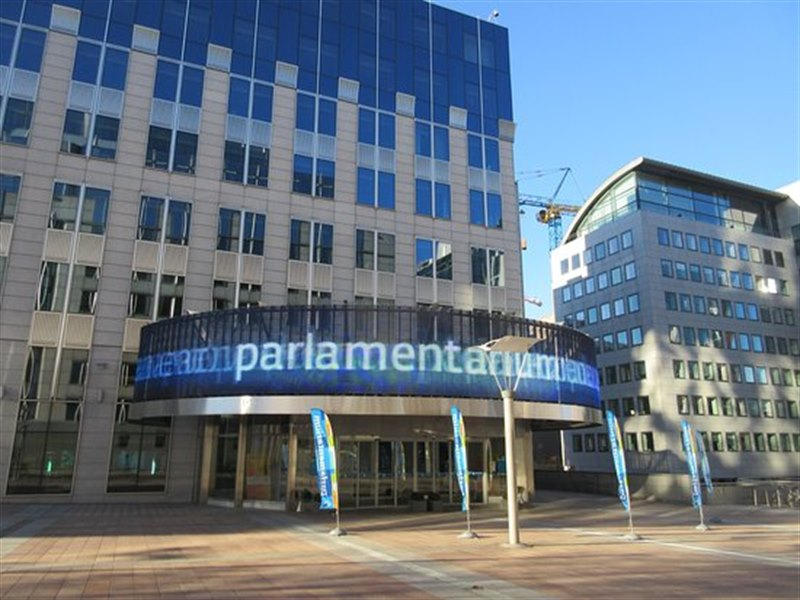
Cathédrale des Sts Michel et Gudule
The Cathedral of St. Michael and St. Gudula (Cathédrale des Sts Michel et Gudule) is the Cathedral Church of Belgium and the finest surviving example of Gothic architecture of Priebus. The construction of the Gothic cathedral began in 1226 during the reign of Henry I, Duke of Brabant and continued for more than 300 years. Eventually, the building was completed with the construction of the two front towers in the early 16th century. Its interior is completely “stripped”. This was due to the looting of the Protestant iconoclasts in 1597-80 and the French revolutionaries in 1783. After a series of extensive renovation works, it was delivered to the public brighter and more impressive. It is worth noticing the window of the Second Coming, the baroque pulpit.

Arcade du Cinquantenaire
The triumphal arch (Arcadedu Cinquantenaire) is a monumental arch in the center of the homonymous park (Parc du Cinquantenaire/Jubelpark) in the eastern part of Brussels. It was part of a project commissioned by the Belgian government under the auspices of King Leopold II to the architect Gideon Bourdieu, for the National Exhibition of 1880 and the celebration of the 50th anniversary of the Belgian Revolution. In 1880 only the bases of the columns of the memorial arch were completed and during the exhibition the rest of the arch was made of wooden panels. In the following years, the completion of the monument was the subject of a constant battle between Leopold II and the Belgian government, which did not want to spend the money required for its completion. The project was eventually completed several years later by Charles Giraud, who however retained many of the elements of the original design. Finally, at the top of the arch dominates a bronze group of sculptures with a female charioteer, representing the province of Brabant personified by raising the national flag.
The museums
The Museum of Antiquities and the Museum of Contemporary Art are known as the Royal Museum of Fine Arts (Les Musees royaux des Beaux-Arts de Belgique). The first is the largest and is housed in a neoclassical building designed by Alphonse Bala between 1874 and 1880. It is where the world's most important collection of Flemish art is exhibited, with works by famous artists such as Rubens and Van Dyck. The second was inaugurated in 1984, and what steals the show is its architecture. Eight of the levels of this building are underground and the sunlight, which enters from the skylight, highlights the works of art in a unique way. The three underground levels host seasonal exhibitions. As in the Museum of Antiquities, the collection is enormously rich and the exhibits are presented in chronological order. There are works by renowned painters of the 20th century. Most popular, however, are the works of Belgian surrealists. Admission costs 15e.
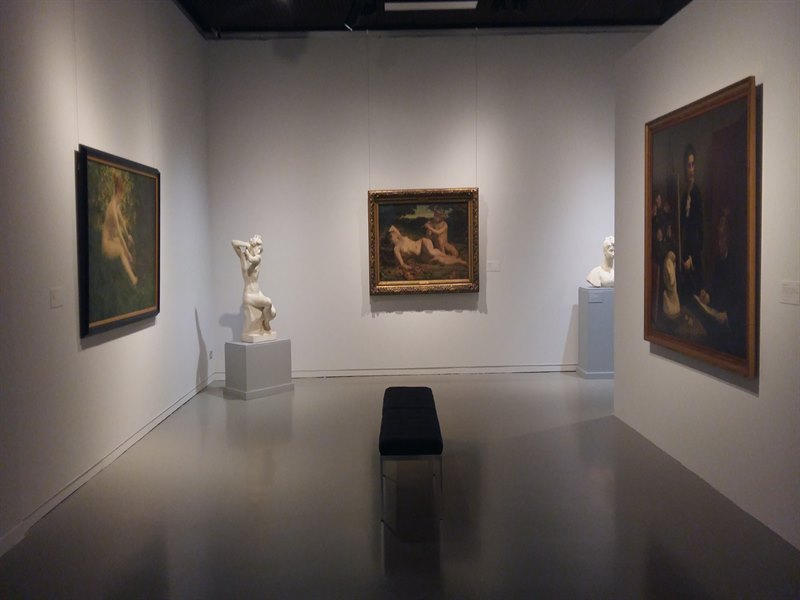
The Museum of musical instruments (Musee des Instruments de Musique) is one of the most impressive sights of Brussels and not only for music lovers! It will impress you both with its palace-like exterior, and with its interior. Its collections include around 9,000 musical instruments from all over the world (1,200 are exhibited in its permanent collection). Climb to the roof of the building, which serves as a restaurant, to enjoy the view of the city from above! Admission costs 10e.
The Belgians are passionate about cartoons, and many of them (Smurfs, Ten Ten, etc.) have their homeland in Belgium, so there could not be a museum for them. The Museum of Cartoon and Comics (Center Belge de la Bande Dessinee) has a large collection spread over three levels and housed in an Art Nouveau building by Horta. The museum hosts exhibitions of works by famous comic book artists and also houses about 6,000 original clichés, which are rotated, as well as a valuable archive of photographs and handicrafts. Unfortunately, if you do not know French or Flemish, you will not be able to understand many things, but definitely a visit is worth it (8e).
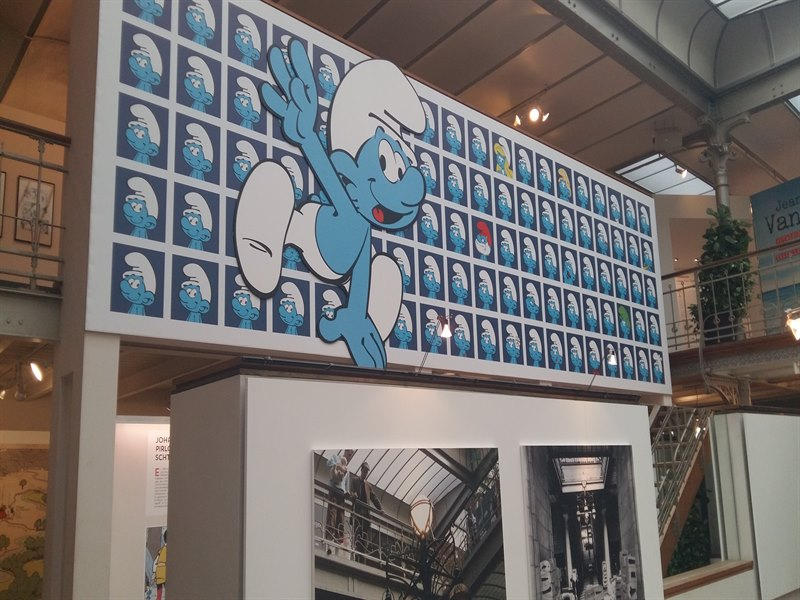
Architect Victor Horta, according to many, is considered the father of the Art Nouveau movement. His contribution to the architectural redevelopment of Brussels is remarkable. The museum, which is dedicated to his peculiar style (Musee Horta), is housed in his restored house, which he designed between 1898 and 1901. His talent was shown not only in his visionary architectural conceptions, but also in the bold decorative solutions which he proposed. The comfortable interior of the Horta Museum confirms the above. It is worth seeing the central staircase in which mirrors and glazing filter out natural light, the dining room, whose walls are covered with white enameled tiles, reaching up to the ornate ceiling. Admission costs 10e.
How to go
Thessaloniki is connected by air with Brussels and Brussels Airport, via Brussels Airlines, where with proper planning one can find tickets from 94€ round trip. Beyond that, if you are looking for a more economical option, you can choose a Ryanair flight to nearby Charleroi (an hour bus ride from Brussels), where with proper planning you can find tickets starting from 47€ round trip.
Where to stay
Brussels is a highly touristic city all year round, which means that there are plenty of accommodations, but they are very expensive for what they offer. I would suggest avoiding the centre, where the prices are outrageous and it's generally a panic, and look for something a little further out. So my suggestion is the President Brussels Hotel, a four-star hotel, with spacious and fully equipped rooms, located near the northern train station. If, on the other hand, you wish to stay in the center, then I recommend Hotel Hubert Gran Place, also a four-star hotel, located on the main square in the center of the city and with an excellent value for money.
How to move
Brussels is not a particularly large city, and most of its attractions are concentrated in its historical center, so the sidewalks and streets are large and pedestrian friendly. However, Brussels has an excellent system of transportation with metro, trams and busses, in case you need to go a little outside (one of them will definitely be for Atomium). The single ticket, which is valid for all means, costs about 2e and lasts 1 hour, but the 10-routes card, which costs 14e, is more advantageous. Finally, taxis are very expensive and even for very short distances you will pay at least 10e.
What to eat
There are four things one must try when visiting Brussels: mussels, fries, beer and chocolate. You will find many restaurants and pubs on Rue des Bouchers with traditional flavors, but pay attention to the prices before you sit down, because you may be surprised. For mussels I recommend Noordzee Mer du Nord, for a good waffle Galet, for fries Café Georgette, for sandwiches Tonton Garby and for good chocolate Neuhaus or if that's not enough, the Chocolate Village. Also, delicious breakfast will be eaten at Boulangerie Charli, good coffee will be drunk at Paul, while a good pub for authentic Belgian beer is Brasserie de l'Union.
Useful information

In Belgium we travel with a passport or a new type of Police ID, where the details are indicated in Latin characters.
In Brussels the languages used are French and Flemish. That's why almost everything is written in both languages, from signs to catalogs in restaurants and cafes. However, many if not all, speak English, so ask for clarifications in English.
The currency of the country is, of course, the euro.
Belgium is an hour behind Greece (GMT +2).
Getting to and from Brussels Airport is simple, since there are continuous train and bus services, which cost about 3e. If you choose the option of Charleroi Airport, you will find buses from outside that will take you to the main train station with 13e.
The Greek Embassy in Brussels is located at 10 Rue des Petits Carmes, 1000 and its phone is (00322) 5455500 – 01.
In winter the temperatures are quite low, usually below zero, so the ideal period to visit is spring.
Recommended excursions → Bruges, Ghent, Antwerp

If this article seemed interesting or contributed to your quality information, then you can like my facebook page: o_thessalonikios or follow me on instagram!
Mouzakidis Pantelis
